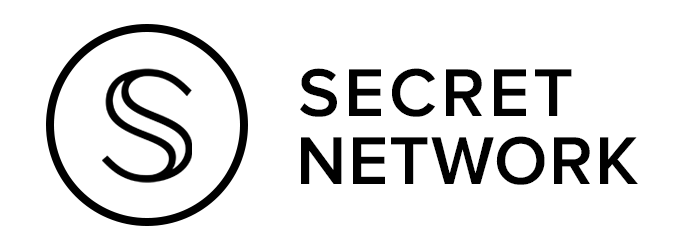Exploring the Secret Network and the SCRT Coin
Secret Network is a decentralized network of nodes that uses privacy-preserving technologies to provide secure and anonymous computing.
Most decentralized finance (DeFi) protocols, based on smart contracts, run on public blockchains such as Ethereum. However, the Secret Network cryptoecosystem is the basis for several private DeFi platforms that benefit from Secret Network privacy features, including secure execution environments (TEE).
In addition, the platform boasts a variety of tools and services, such as private smart contracts, Secret Network stacking and Secret Network Bridge. In addition, Secret Token Bridge allows users to convert a native SCRT coin into an interoperable SCRT token for use in various blockchain networks.
In this article, we will delve deeper into the Secret Network crypto ecosystem and look at Secret Network stacking, Secret Network Bridge, the SCRT coin, and the SCRT token.

So what is a Secret Network?
Most blockchains that support smart contracts tend to be public. However, Secret Network uses private smart contracts with encrypted inputs and outputs to ensure data security and privacy.
The Secret Network team believes that privacy is key to the mass adoption of blockchain and Web3 technologies. As such, Secret’s private smart contracts combine the usability of Ethereum smart contracts, the scalability and interoperability of Cosmos, and the privacy of Monero.
By combining these features, Secret Network aims to provide the foundation for the next generation of Web3 applications using advanced privacy features.
The decentralized node network uses a secure execution environment (TEE) to protect the network using the Delegated Proof of Stake (DPoS) consensus mechanism. This enables secure encryption of anonymous computation for use in many different applications.
Secret Network members can choose how and with whom they share transactional data, giving them complete control over their privacy.
The Secret Network cryptoecosystem contains a number of permissionless, decentralized applications written in the Rust programming language. These applications can interact with Secret’s private smart contracts and use encrypted data without revealing the latter.
Programmable privacy
Most cryptocurrency privacy solutions focus on transaction privacy. Programmable privacy facilitates the encryption of multiple computations, which in turn provides various new uses for smart contracts and decentralized applications (dApps).
Secure execution environment (TEE)
A secure execution environment (TEE) is a neutral party, in the form of secure and private computing hardware. TEEs reside in a remote part of the processor of a device that is not part of the underlying operating system.
In addition, the TEE provides a tamper-proof method of storing, processing and protecting data. Each new node in the network undergoes a “remote attestation” process to verify the validity of the TEE and other equipment.
SCRT Coin
The SCRT coin is the Secret Network’s own cryptocurrency. Like Ethereum (ETH) and Bitcoin (BTC) , the SCRT coin is a requirement for the entire network.
When applications are used on the network, users must pay gas and computing fees only through SCRT. In addition, SCRT coin holders can participate in the governance of the platform by voting on proposals to change the protocol.
There are many ways to purchase SCRT. Users outside the U.S. can purchase directly from the Secret Network website. Alternatively, SCRTs can be purchased on the SecretSwap exchange, which operates on the Secret Network.
SCRT Token
This version of SCRT is also available on various centralized crypto exchanges and decentralized exchanges (DEX) as both the Ethereum ERC-20 token, and the Binance Smart Chain (BSC) BEP-20 SCRT token. This includes Binance, Uniswap and PancakeSwap. Accordingly, the SCRT token is a crosschain asset with high interoperability.

Secret Network Stacking
Secret Network uses the Delegated Proof of Stake (DPoS) consensus mechanism for transaction validation and computation processing. Validators, known as “secret nodes,” must maintain consistent uptime while receiving block rewards.
SCRT holders can participate in Secret Network steaking by running a secret node. By participating in Secret Network Stacking, SCRT coin holders can not only help maintain the network, but also earn a passive income of 25 to 30% return on investment (ROI).
Managing
Participating in Secret Network stacking allows SCRT coin holders to participate in the management of the network. Onchain governance allows the community to submit and vote on proposals to improve the Secret Network crypto ecosystem and, moreover, to determine the future development of the platform.
Secret tokens
Secret tokens are private programmable tokens similar to Ethereum ERC-20 tokens. They come in several forms and can represent the Secret Network’s own assets as well as assets outside the network.
Although Secret Tokens are inherently private, their minting and burning are publicly available intranet transactions. In addition, all Secret Token transactions remain encrypted and anonymous. To reveal the underlying values of these transactions, users must create a “view key.”
Rather than providing full transparency by default, network participants can control the degree of privacy they want to maintain.
The generation of browse keys helps verify the identity of network participants requesting certain accounts. In turn, this process aims to make it easier to provide compliance and regulatory data for audits.
Among the most common Secret Token standards is the interchangeable SNIP-20 token. In general terms, the SNIP-20 standard represents the Ethereum ERC-20 and ERC-777 token standards with enhanced privacy features.
Secret tokens are freely tradable assets that can be used to create non-interchangeable tokens (NFTs), trade and invest in decentralized applications (dApps) that preserve privacy, and are built on the Secret Network through Secret Bridges.
Secret Network Bridge
Secret Network Bridges allow external blockchain networks to connect to the Secret Network. Using a Secret Network Bridge allows these networks to create SCRT tokens. Assets that pass through Secret Network Bridge can be used in Secret Network DeFi-applications.
Secret Network Bridge currently supports the private conversion of Ethereum ERC-20 and Binance Smart Chain (BSC) BEP-20 SCRT tokens. In the future, we can expect to see even more supported blockchain networks. Thus, Secret Network intends to become a “transitional multichain interoperable privacy hub” for all blockchains.
Private Smart Contracts
Secret contracts are private smart contracts that use an adapted version of CosmWasm v0.10 to provide optimal integration with the Cosmos ecosystem. These smart contracts have cross-network functionality and use encrypted inputs, outputs, states and addresses.
The main programming language used to write secret contracts is Rust. It was chosen because of the optimized execution environment it offers, as well as its low transaction costs and easy compilation.
When requesting smart contracts in Cosmos, the identity of the requestor cannot be cryptographically authenticated. However, secret contracts use encrypted lookup keys to verify the identity of the caller and decrypt data associated with their wallet address.
In addition, the surcharge feature allows users to allocate some of their funds to other accounts so that balances from other contracts can be managed.
These private smart contracts are at the core of the Secret Network DeFi ecosystem and also underpin many of the new applications and protocols created on the network.
SecretSwap and the Secret Finance token (SEFI)
SecretSwap is an inter-network private automated market maker (AMM) and liquidity protocol running on the Secret Network. The SecretSwap platform allows users, via private smart contracts with encrypted inputs and outputs, to exchange SNIP-20 tokens. As a result, transactions in SecretSwap are secure and resistant to outperformance.
To reduce fees, the protocol uses inter-network liquidity from Ethereum, Binance Smart Chain (BSC) and Monero bridges. SecretSwap provides a higher level of privacy than many AMMs, uses no order book, and is not controlled by any centralized party.
The control token for the SecretSwap platform is the SEFI token. The SEFI token is a non-inflationary asset with a hard limit of one billion tokens. Token holders can also vote for SEFI funding.

Bottom line
Secret Network creates effective options for privacy-focused applications and technologies. The platform provides a wide range of privacy-focused tools and services where the degree of disclosure of underlying data is programmed by default.
With next-generation secret contracts, a wide range of private decentralized finance (DeFi) protocols are implemented. The evolving Secret DeFi ecosystem offers tools and services that rival some of the best known smart contract blockchains.
However, Secret DeFi protocols benefit from modern encryption by offering a flexible and anonymous alternative to decentralized applications (dApps) built on publicly available blockchains.
Secret Network’s long-term goal is to become a “web3 crosschain privacy platform. In addition, Secret Network believes that privacy preservation needs to become a mass implementation.
Accordingly, the project aims to support all blockchain networks and provide a wide range of blockchain-independent, privacy-preserving Web3 technologies.
